Gnomes – Fantastic Supernatural Creatures Knowing Secrets Of Earth Mountains Rivers And Rocks
A. Sutherland - AncientPages.com - In his book "Enchantment of the Faerie Realm" Ted Andrews writes:
"The forces of nature are often classified according to one of four kinds of expression - earth, water, air, and fire. Operating at the most primal level with these expressions of force in the natural world are beings called elementals. Those working with the force of the earth in the natural world are called gnomes..."
Gnomes are very ancient tiny spirits of the earth and mountains. They have accompanied people throughout history. You can read about them in countless fairy tales of almost all European countries, especially in Germanic and Scandinavian folklore, the legends of Ireland, Scotland, and England.
In Europe's Renaissance magic and alchemy, a gnome was introduced in the 16th century by Paracelsus, a Swiss German botanist, philosopher, astrologer, alchemist, and one of the most influential medical scientists in early modern Europe.
With time, gnomes have been adopted by more recent authors, including those of modern fantasy literature.
This is a preview of our premium article available only to members of Ancient Pages.
Become a member to read more - Click here
If you are already a member and have logged in to your account, you can access the article here
See also:
Legend: Strange Encounter With The Fairies In The Land Of The Light
Little People: Ancient Race That Pre-Dates Native Americans, Celts, And Other Settlers Worldwide
Explore - Ancient Pages Library Of Ancient And Unexplained Mysteries
More From Ancient Pages
-
 3,000-Year-Old Bakery With Large Amounts Of Flour Discovered In Armenia
Archaeology | Jul 3, 2023
3,000-Year-Old Bakery With Large Amounts Of Flour Discovered In Armenia
Archaeology | Jul 3, 2023 -
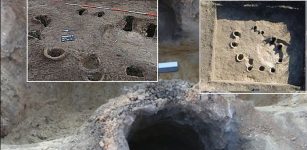 Celts In Poland: Iron Smelting Furnaces Used By Celts 2,400 Years Ago – Unearthed
Archaeology | Nov 30, 2019
Celts In Poland: Iron Smelting Furnaces Used By Celts 2,400 Years Ago – Unearthed
Archaeology | Nov 30, 2019 -
 Mesolithic Stone Mace Head Found Near Buckingham, UK
Archaeology | Apr 7, 2023
Mesolithic Stone Mace Head Found Near Buckingham, UK
Archaeology | Apr 7, 2023 -
 12,000-Year-Old Flutes Made From Bird Bones – Discovered
Archaeology | Jun 10, 2023
12,000-Year-Old Flutes Made From Bird Bones – Discovered
Archaeology | Jun 10, 2023 -
 Exceptional Precision And Technical Mastery Of Iberian Archery From 7,000 Years Ago
Archaeology | Dec 27, 2024
Exceptional Precision And Technical Mastery Of Iberian Archery From 7,000 Years Ago
Archaeology | Dec 27, 2024 -
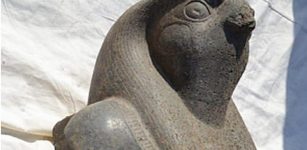 Colossus Of Standing Falcon-Headed God Horus Unearthed In Egypt’s Luxor
Archaeology | Jan 6, 2020
Colossus Of Standing Falcon-Headed God Horus Unearthed In Egypt’s Luxor
Archaeology | Jan 6, 2020 -
 DNA Study Of Ice Age Survivors Reveals A Surprise About The Gravettian Culture
Archaeology | Mar 1, 2023
DNA Study Of Ice Age Survivors Reveals A Surprise About The Gravettian Culture
Archaeology | Mar 1, 2023 -
 A 1,500-Year-Old Basilica Re-Emerged Due To Withdrawal Of Waters From Lake Iznik
Archaeology | Sep 12, 2020
A 1,500-Year-Old Basilica Re-Emerged Due To Withdrawal Of Waters From Lake Iznik
Archaeology | Sep 12, 2020 -
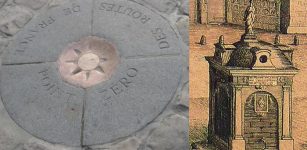 Paris Point Zero And The Mysterious Statue Of Monsieur Legris
Featured Stories | Dec 4, 2018
Paris Point Zero And The Mysterious Statue Of Monsieur Legris
Featured Stories | Dec 4, 2018 -
 Why We Celebrate Saint Lucy’s Day – The Bringer Of Light And Patron Of The Blind
Christmas Traditions | Dec 13, 2024
Why We Celebrate Saint Lucy’s Day – The Bringer Of Light And Patron Of The Blind
Christmas Traditions | Dec 13, 2024 -
 Puzzling Construction Of Unique Sunken Ship From The 17th Century Examined
Archaeology | Jul 28, 2022
Puzzling Construction Of Unique Sunken Ship From The 17th Century Examined
Archaeology | Jul 28, 2022 -
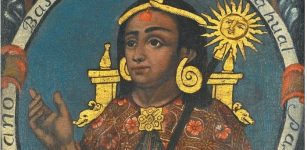 On This Day In History: Last Inca Emperor Atahualpa Captured By Francisco Pizarro – On Nov 16, 1532
News | Nov 16, 2016
On This Day In History: Last Inca Emperor Atahualpa Captured By Francisco Pizarro – On Nov 16, 1532
News | Nov 16, 2016 -
 On This Day In History: Comet Donati First Observed By Italian Astronomer – On June 2, 1858
News | Jun 2, 2016
On This Day In History: Comet Donati First Observed By Italian Astronomer – On June 2, 1858
News | Jun 2, 2016 -
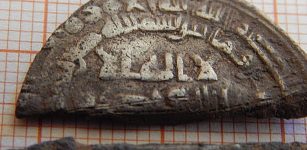 Treasure Trove Of Arabic Coins Dated Back 1,000 Years Unearthed In Graveyard In Poland
Archaeology | Jul 9, 2019
Treasure Trove Of Arabic Coins Dated Back 1,000 Years Unearthed In Graveyard In Poland
Archaeology | Jul 9, 2019 -
 Large Collection Of 2,200-Year-Old Tombs With Boat Coffins Made Of Nanmu Wood, Unearthed In SW China
Archaeology | Feb 10, 2017
Large Collection Of 2,200-Year-Old Tombs With Boat Coffins Made Of Nanmu Wood, Unearthed In SW China
Archaeology | Feb 10, 2017 -
 Famine And Disease Drove The Evolution Of Lactose Tolerance In Europe
Archaeology | Jul 27, 2022
Famine And Disease Drove The Evolution Of Lactose Tolerance In Europe
Archaeology | Jul 27, 2022 -
 Gotu Kola – Extraordinary Ancient Herb That Increases Longevity And Improves Cognitive Abilities
Ancient Traditions And Customs | Mar 13, 2019
Gotu Kola – Extraordinary Ancient Herb That Increases Longevity And Improves Cognitive Abilities
Ancient Traditions And Customs | Mar 13, 2019 -
 Incredible Trove Of 100,000 Ancient Coins Tied Together In Bundles Uncovered In Japan
Archaeology | Nov 13, 2023
Incredible Trove Of 100,000 Ancient Coins Tied Together In Bundles Uncovered In Japan
Archaeology | Nov 13, 2023 -
 ‘Giants’ Discovered In Ancient Grave In China
Archaeology | Jul 6, 2017
‘Giants’ Discovered In Ancient Grave In China
Archaeology | Jul 6, 2017 -
 Enigmatic Dispilio Tablet, Neolithic Flutes And The Traditional History Of Writing
Artifacts | May 30, 2024
Enigmatic Dispilio Tablet, Neolithic Flutes And The Traditional History Of Writing
Artifacts | May 30, 2024



